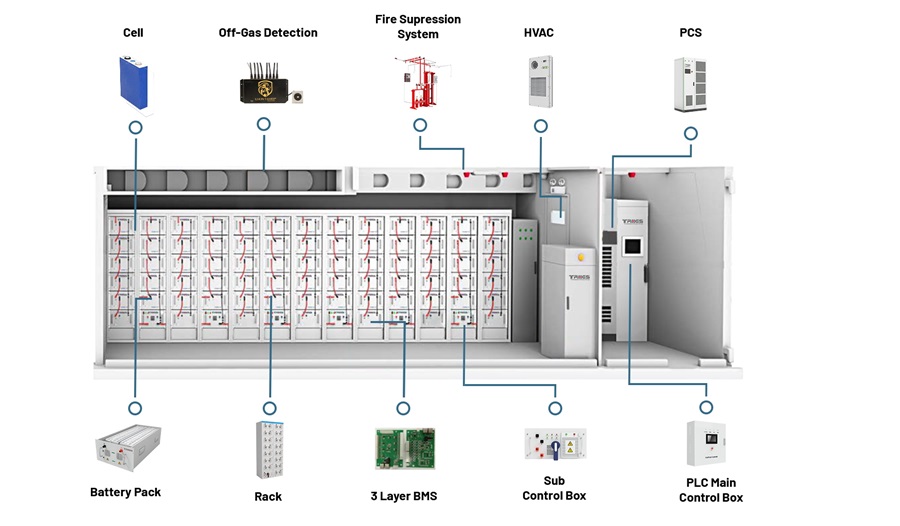
LiFePO4 battery has a series of unique advantages such as high operating voltage, high energy density, long cycle life, green environmental protection, and step-less expansion, which can be used for large-scale energy storage after forming an energy storage system. With the rise of the energy storage market, in recent years, some power battery companies have laid out energy storage businesses to open up new application markets for lifepo4 batteries.
The lifepo4 battery energy storage system is controlled by a programmable logic controller (PLC) and a human-machine interface (HMI). One of the key functions of the PLC system is to control the charging time and rate of the energy storage system.
For example, a PLC can receive real-time data on the price of electricity and decide how quickly to recharge the battery system based on the maximum allowable demand, charging status, and peak/off-peak price comparison. This decision is dynamic and can be optimized for specific situations. It is integrated with the rest of the system through standardized communication inputs, control signals, and power supply. It can be accessed via dial-up or the Internet. It has multiple layers of defense to limit access to its different functions and provides customized reporting and alarm functions for remote monitoring.
The function of the power conversion system is to charge and discharge the battery and provide improved supply quality, voltage support, and frequency control to the local grid. It has a complex and fast-acting, multi-quadrant, dynamic controller (DSP) with dedicated control algorithms that convert the output across the entire range of the device, that is, absorbing from full power to full power output cyclically. It works well for reactive power and any combination of active and reactive power requirements.
A stack is made up of several single cells. LiFePO4 battery pack energy storage systems componentscan economically store and provide large-scale electricity on demand, the main mode is fixed. It is a long-life, low-maintenance, high-efficiency technology that supports step-less expansion of power and storage capacity. Energy storage systems are particularly effective for renewable energy providers, grid enterprises, and end users.
The lifepo4 battery energy storage system can be applied to all aspects of the power supply value chain, and can convert intermittent renewable energy power such as wind and solar power into stable power output; Optimal solutions for power supply in remote areas;
The deferral of fixed investment in the power grid, and the application of peak cutting and valley filling. The energy storage system can also be used as a backup power supply for substations and communication base stations. The iron-lithium battery energy storage system is environmentally friendly has the lowest ecological impact among all energy storage technologies, and does not take elements such as lead or cadmium as the main reactants.
In the process of continuous research and development and practice of energy storage systems, in addition to designing corresponding solutions to some practical problems, it has further developed and applied other remote monitoring, cloud management systems, big data collection and analysis, and energy storage battery recycling. This will continue to be applied and improved in the future power station energy storage, home energy storage, communication energy storage and other different energy storage systems.
Next:Global tour▕ Talesun Solar debuted at the 2024 South American Smart Energy Exhibition
Previous:40MWh Energy Storage Project Powers Cement Industry’s Carbon Reduction